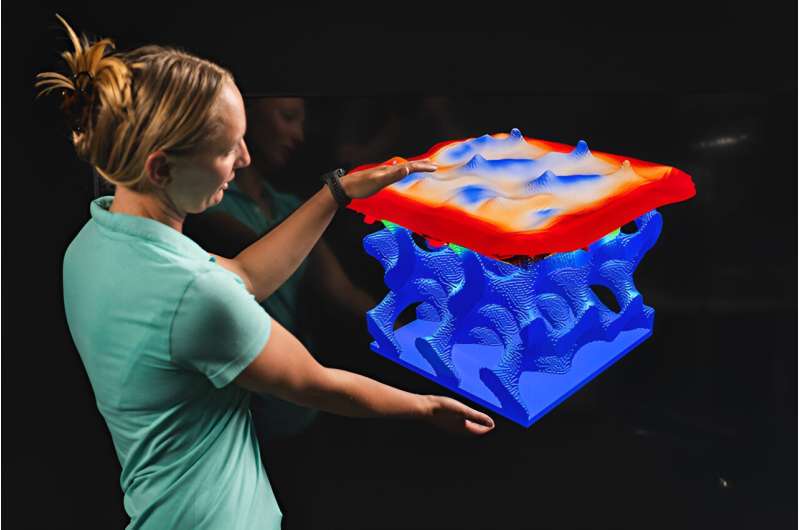
A new open-source code developed by researchers at Los Alamos National Laboratory accurately simulates the performance of manufactured parts accounting for the microstructure to make them stronger, safer, and better-performing.
Called Fierro, the code performs multiscale and multiphysics simulations, meaning it can simultaneously simulate different aspects of physical systems and their interactions across varied time and length scales. Fierro also offers multiphysics autonomous design. Its AI capability searches for the optimal design among millions of possible design choices and utilizes the flexibility of additive manufacturing to make the part.
"Codes such as these are essential to understanding the relationship between manufacturing processes and part performance," said Nathaniel Morgan, a scientist at Los Alamos National Laboratory and lead developer of Fierro. "Adjusting processes to give a superior microstructure yields a stronger product. The need to better understand the impact of microstructure on part performance is critical, and creates pathways to adopt modern manufacturing methodologies."
In some cases, the performance of microstructure in a part can be a matter of life or death. For example, in 1996, the engine fan hub on an MD-88 aircraft failed, killing a mother and her 12-year-old son. The cause of the failure was a crack that began at an area where the microstructure had been altered because of a drill hole. The lack of understanding of how the microstructure would be impacted by this drilling process led to a catastrophic failure.
While other codes exist to address the same challenge, the Fierro code contains unique multiphysics solvers combined with advanced multiscale models. These simulate the performance of parts as a function of the material microstructure or the intricate topology of an additively manufactured—or 3D printed—lattice structure. Fierro does this by exploiting the power of modern supercomputers, including GPU-based machines, and overcoming numerous hurdles to allow routine high-fidelity simulations. This can benefit multiple industries, including the aircraft and automotive industries, by reducing the vehicle weight to enhance the power-to-weight ratio, thereby reducing energy consumption.
For manufacturing applications—such as rolling, stamping, and extruding—with extreme levels of shear and deformation, the Fierro code uses efficient physics solvers that combine with multiscale material models to allow for a large array of materials. This reduces both energy consumption and waste, while yielding a superior performing part and greater manufacturing throughput.
More information: Users can access the Fierro code on Git Hub and YouTube.
Citation: Open-source code boosts safety and performance of parts (2024, July 31) retrieved 31 July 2024 from https://techxplore.com/news/2024-07-source-code-boosts-safety.html
This document is subject to copyright. Apart from any fair dealing for the purpose of private study or research, no part may be reproduced without the written permission. The content is provided for information purposes only.
